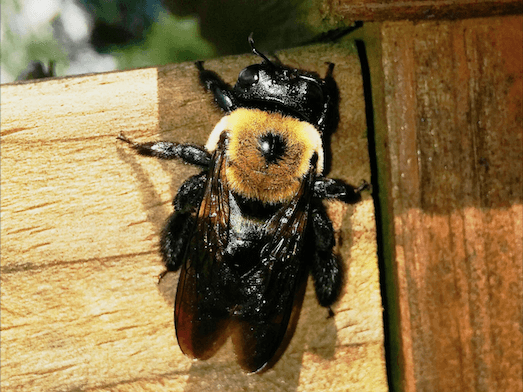Carpenter bees (wood bees) are any of the 500 species of the Xylocopa genius of the Xylocopinae subfamily. They mainly burrow in hard plant material like dead wood or bamboo hence their “carpenter” name. The proxylocopa subgenius are an exception as they nest in the soil.
Life Cycle and Habitat
They have four life stages; egg, larval, pupal and adult stages. It takes 7 weeks to reach maturity and it varies with environmental conditions like temperature.
Unlike their habitat, they do not eat wood but rather eat plant pollen and nectar. They sting rarely. They are regarded as being more solitary than social. Sometimes, females cohabit and share duties from foraging, nest laying to guarding.
Economic Importance
As residential insects, they are regularly found near homes. Signs of infestations are evident by wood openings, sawdust form holes drilled, pollen and feces. The Females only sting when seriously provoked but the males tend to dissuade the attacker rather than stinging.
Carpenter bees destroy dry, unpainted and weathered wooden objects like decks, doors, fences, railings, roofleaves, untreated poles, windowsills and wooden lawn furniture. They enjoy excavating the rails and posts of oak split rail fences. They are selective and would rather go for pine, fir, citrus, oak and redwood as they prefer wood without bark and polish.
Control and Elimination
There are numerous ways to eliminate carpenter bees but the first will be the avoidance of loose wood. Doors and other wooden furniture should be polished or painted. Other means are:
• Call a pest control professional to Spray a residual liquid insecticide in areas where the bees are boring in wood.
• Cover up the holes with plugs like cork, putty or caulking materials
• Use of carpenter bee traps as a non-chemical alternative.


